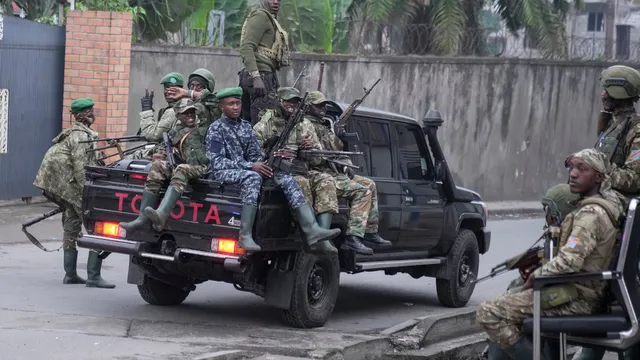
Violence escalates in eastern Congo as dozens are killed in weekend attacks
2025-04-13 10:55- At least 50 people were killed over the weekend in violent clashes in eastern Congo, specifically around Goma.
- The escalating conflict involves government forces and Rwanda-backed M23 rebels, contributing to an ongoing humanitarian crisis.
- The violence underscores the challenges of peace efforts, with both sides of the conflict maintaining their positions amid international mediation.
Express your sentiment!
Insights
The ongoing conflict in the eastern regions of the Democratic Republic of the Congo has intensified, with reports confirming that at least 50 people lost their lives during a recent wave of violence. This latest escalation occurred over the weekend with attacks noted in and around Goma, the region's largest city, which has fallen under the control of the M23 rebels. The violence is attributed to a range of factors, primarily the confrontations between Congolese government forces and Rwanda-backed rebel groups, which have significantly affected the stability and security of the area. Previously, the decades-long conflict saw a marked increase in hostility beginning in January when the M23 rebels made aggressive advances, capturing Goma and subsequently Bukavu in February. Within these few months, the death toll escalated to approximately 3,000, and over 7 million people have been displaced due to the violence. The United Nations experts suggest that the M23 is bolstered by an estimated 4,000 troops from Rwanda, effectively complicating the situation and raising fears of a broader regional conflict. Amidst the escalating violence, both sides have been trading blame for the deaths and chaos, with Congolese authorities accusing the M23 rebels of the attacks, while the rebels countered with claims of assaults from the Congolese forces. Tensions have been further fueled by fear among local populations, leading many families to spend nights in hiding as gunfire and explosions erupted around them. The complex interplay of local and national interests perpetuates a cycle of violence that continues to bruise the humanitarian landscape of eastern Congo. The international community has attempted to intervene, with diplomatic talks facilitated by Qatar aimed at de-escalating the conflict. However, the negotiators face significant impediments, as the M23 rebels have expressed demands that include the annulment of all death sentences against their members by the Congolese President Felix Tshisekedi. Observers remain skeptical about the potential effectiveness of talks without substantial pressure from external actors, notably Rwanda, to influence the rebels’ actions. As residents of Goma continue to navigate the violent instability, they face uncertainty regarding their future and the region’s ongoing struggles for peace.
Contexts
The current humanitarian situation in eastern Congo remains critical, characterized by widespread violence, displacement, and a severe lack of basic necessities. Despite ongoing efforts from various international and local organizations to provide relief, the region continues to grapple with the aftermath of decades of conflict, compounded by recent escalations in violence among armed groups. This persistent instability has led to the dislocation of millions of people, leaving them vulnerable to food insecurity, inadequate healthcare, and insufficient access to education. As of 2025, it is estimated that over 5 million people are internally displaced within eastern Congo, which places immense pressure on local resources and communities that are already struggling to cope with the influx of vulnerable populations seeking refuge from violence. Access to essential services, such as clean water, nutrition, and healthcare, remains a significant challenge. Many areas are plagued by outbreaks of disease, including cholera and measles, exacerbating the plight of displaced individuals, particularly children and the elderly. Malnutrition rates are alarmingly high, with many families resorting to extreme measures to survive, including the sale of livestock and the depletion of savings. Humanitarian assistance is hampered by both security concerns and the logistical difficulties posed by inadequate infrastructure. As a result, many aid organizations are unable to reach the most vulnerable populations in remote areas, leading to gaps in aid delivery. In addition to the urgent humanitarian needs, the ongoing conflict in eastern Congo has also caused profound psychological trauma among the affected populations. Many survivors of violence, including sexual violence, face stigmatization and social isolation, which hinder their recovery and reintegration into communities. This has long-term implications for social cohesion and stability in the region. Efforts to promote peace and reconciliation remain critical, as communities work to rebuild trust and provide support for healing among individuals affected by violence. International attention and intervention are vital in addressing the multifaceted humanitarian crisis in eastern Congo. Continuous funding and resources are necessary for humanitarian organizations to operate effectively and reach those in need. Furthermore, support for strengthening local governance and infrastructure is essential to enhance resilience against future conflicts. Ensuring the protection of civilians and promoting human rights must remain at the forefront of both international and local strategies in order to foster sustainable peace and bring about long-term improvements in the humanitarian situation.